Available at HobbyLink Japan: 1/20 Team Lotus Type 49B 1968
The Lotus 49b is a memorable car for a number of reasons. Firstly, the classic red, cream, and gold livery is one of the most elegant that motorsport has ever seen. Secondly, this was the very car that began the aero age in motorsport. The 49B, which was equipped with a hi-wing in the rear and nose cone wings up front, was the start of a new dawn in Formula One. It was driven by Graham Hill and Mario Andretti in the 1969 Race of Champions at Brands Hatch. Ebbro has now replicated one of the most beautiful F1 cars of all time in 1/20 scale.


Cockpit & front monocoque
The first steps of the build are the cockpit and surrounding bodywork of the monocoque. The beautiful sleek lines of the bodywork at comprised of four main pieces with the tub being made up of a further five pieces all painted in a sea grey. The kitset comes complete with decals for a 5-point harness, although I prefer to use the Tamiya etching harness for F1 cars due to the cockpit being open and very visible upon completion.
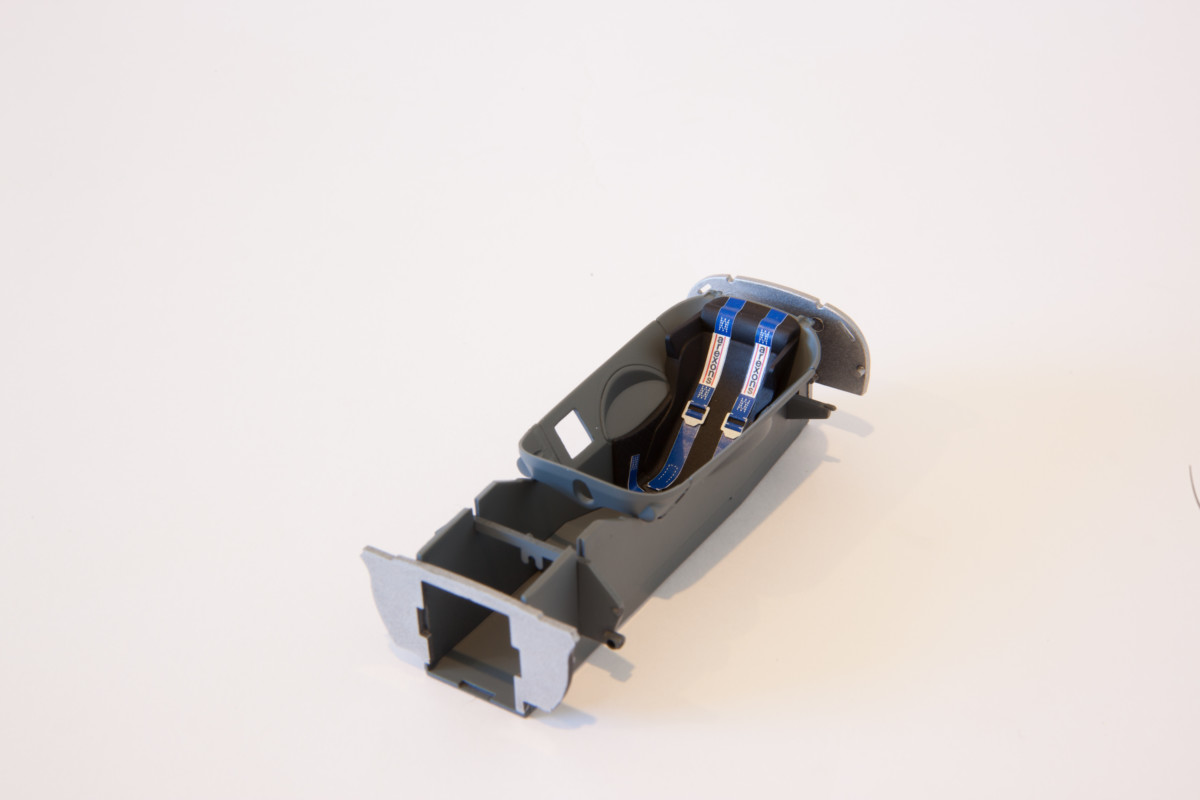
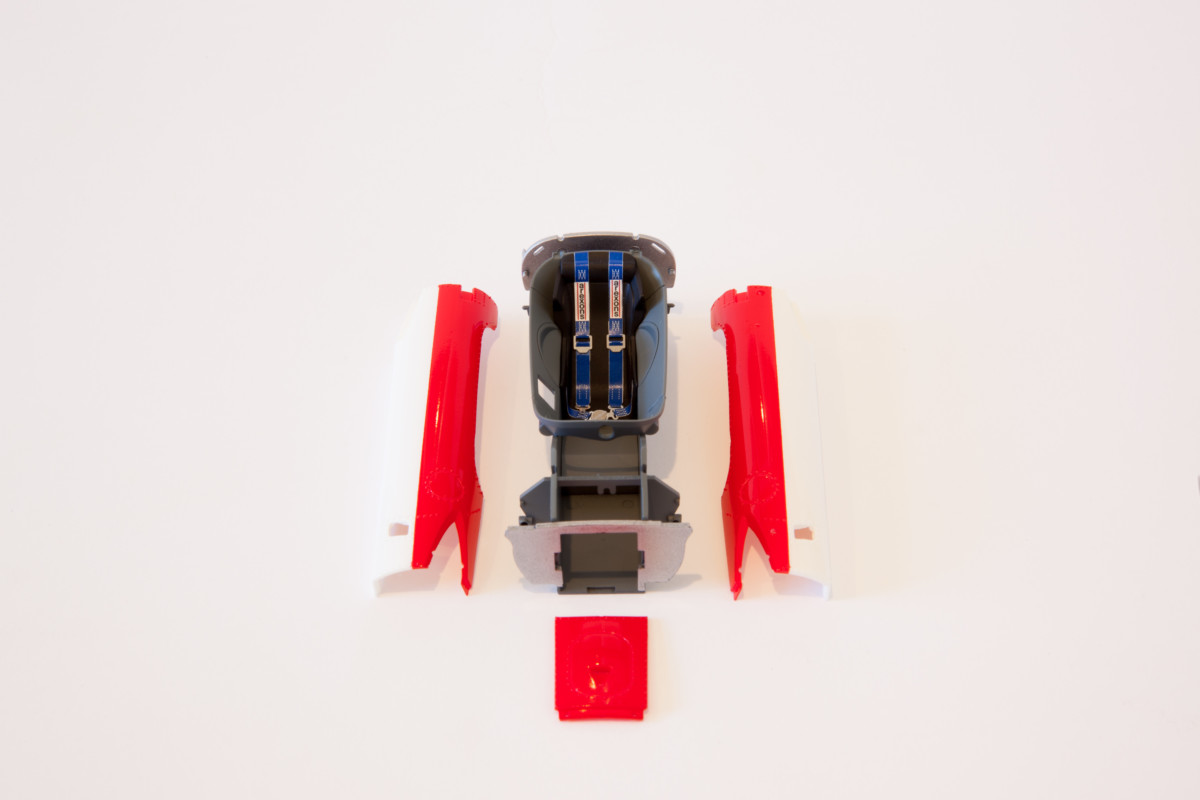
As you complete the cockpit, the cowling then seamlessly fits around it to create the finished monocoque. One thing to keep in mind is that decals must be applied while building this kitset, rather than at the end. The white base, white roundel, and numbers are all comprised of decals. I would also highly recommend shooting the bodywork with a 2k clear to protect the decals as the monocoque gets heavily handled during the remainder of the build.
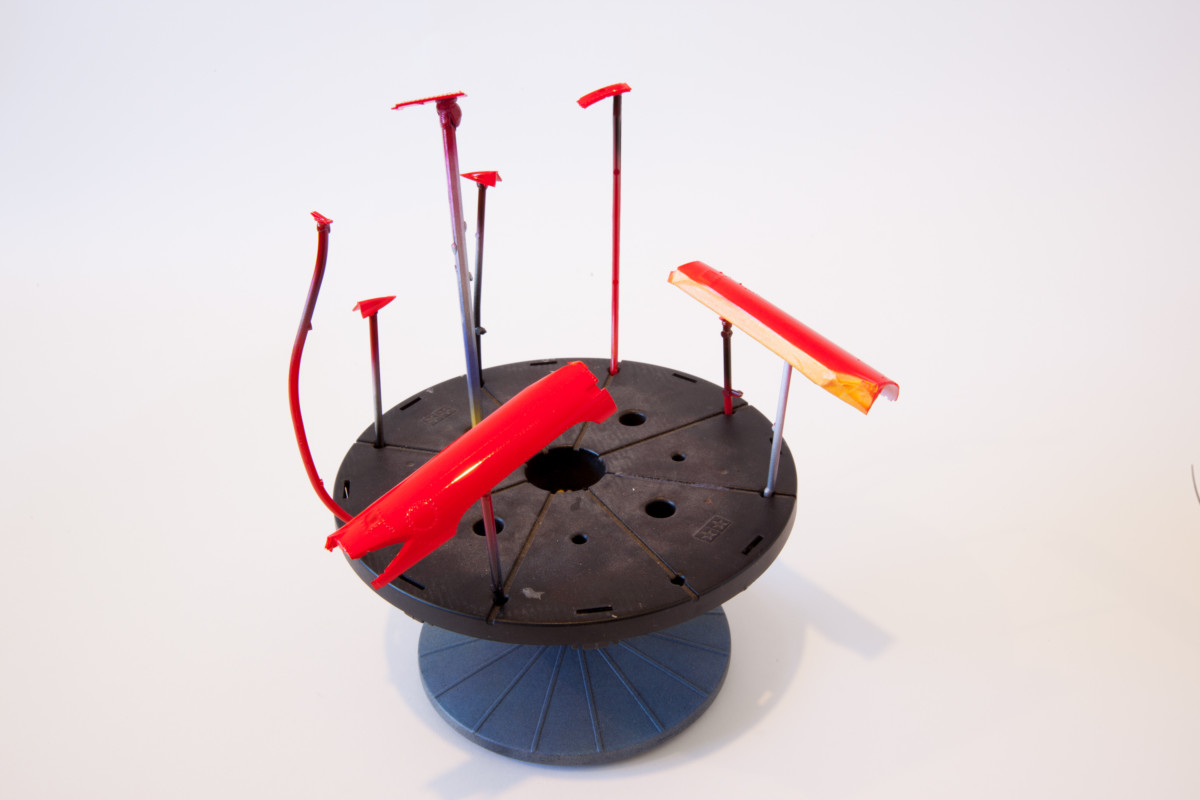
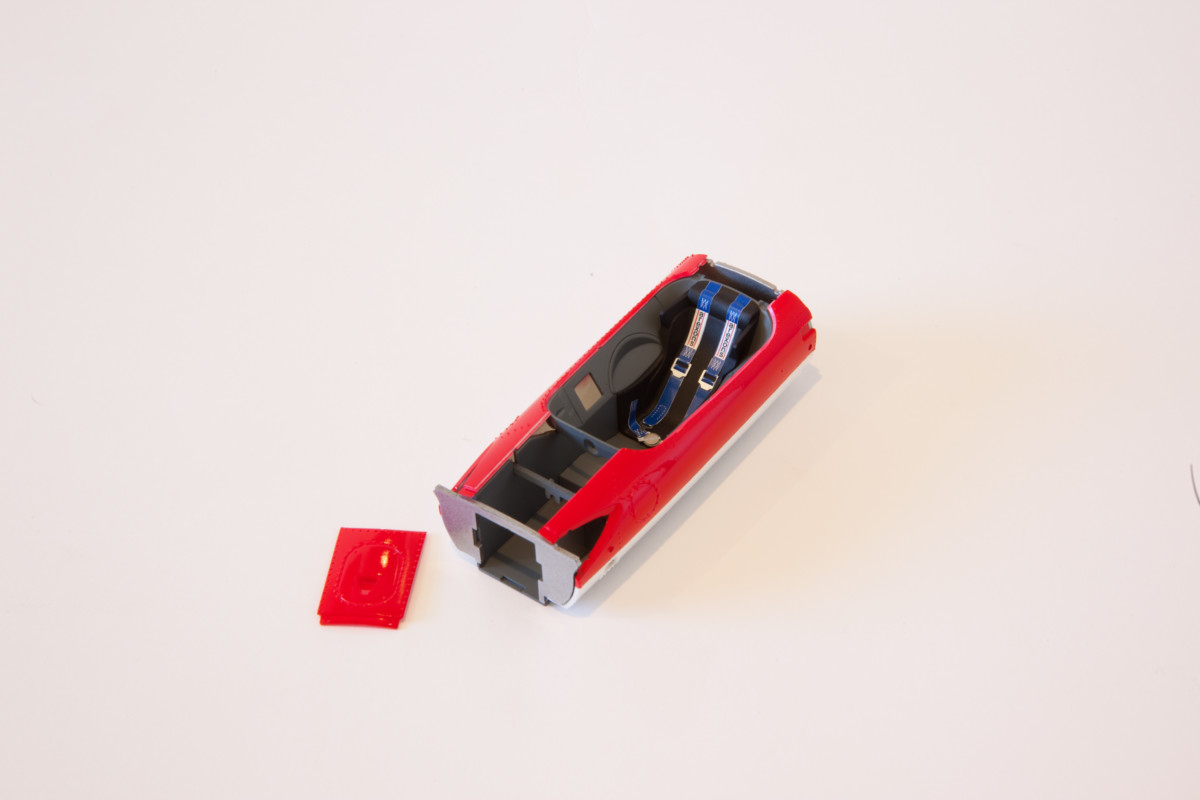
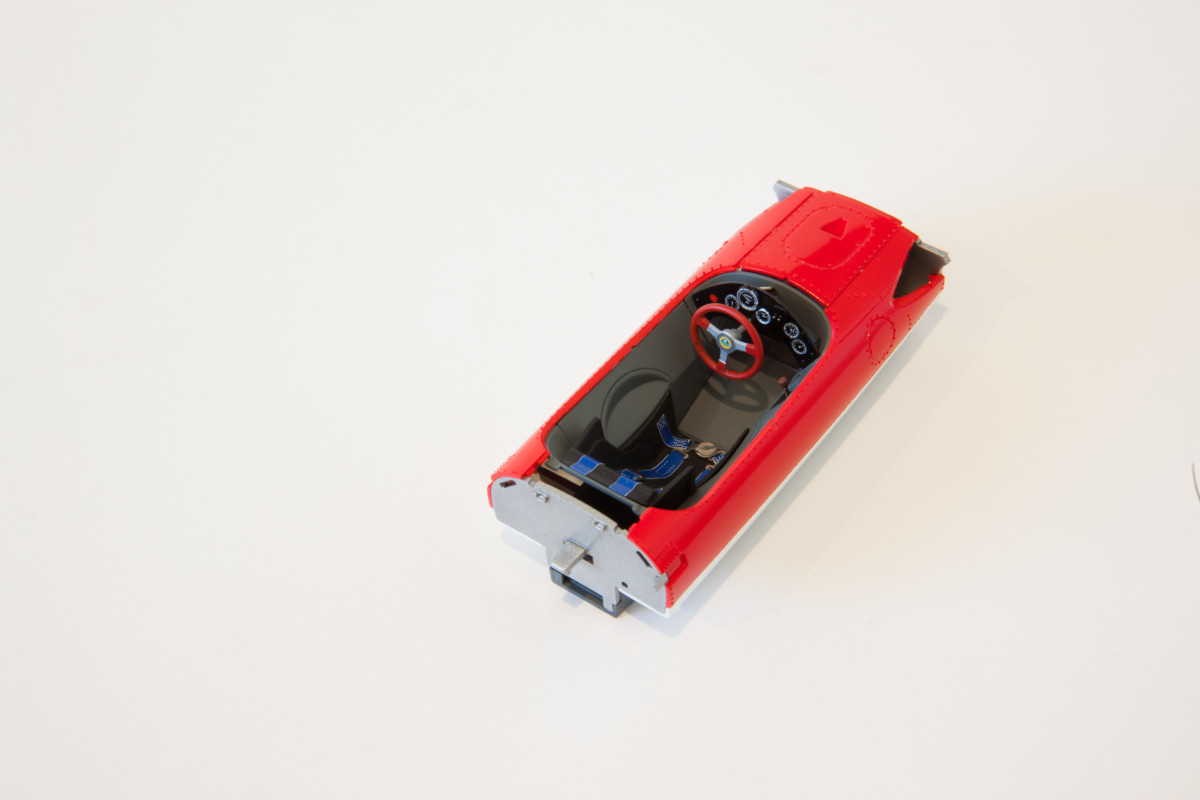
The unmistakeable matte-red steering wheel which these cars were famous for is replicated, as is the beautiful instrument cluster dashboard. The dials are courtesy of decals which fit perfectly within their circular frames.
Front suspension and front cowling
The Lotus 49 features a front suspension and pedal box setup that is largely hidden away once covered by the front nose cone. However, in true Ebbro style the detail of the suspension is amazing, and if you wish to spend time detailing the front end, the finished product could be nicely displayed minus the front bodywork.
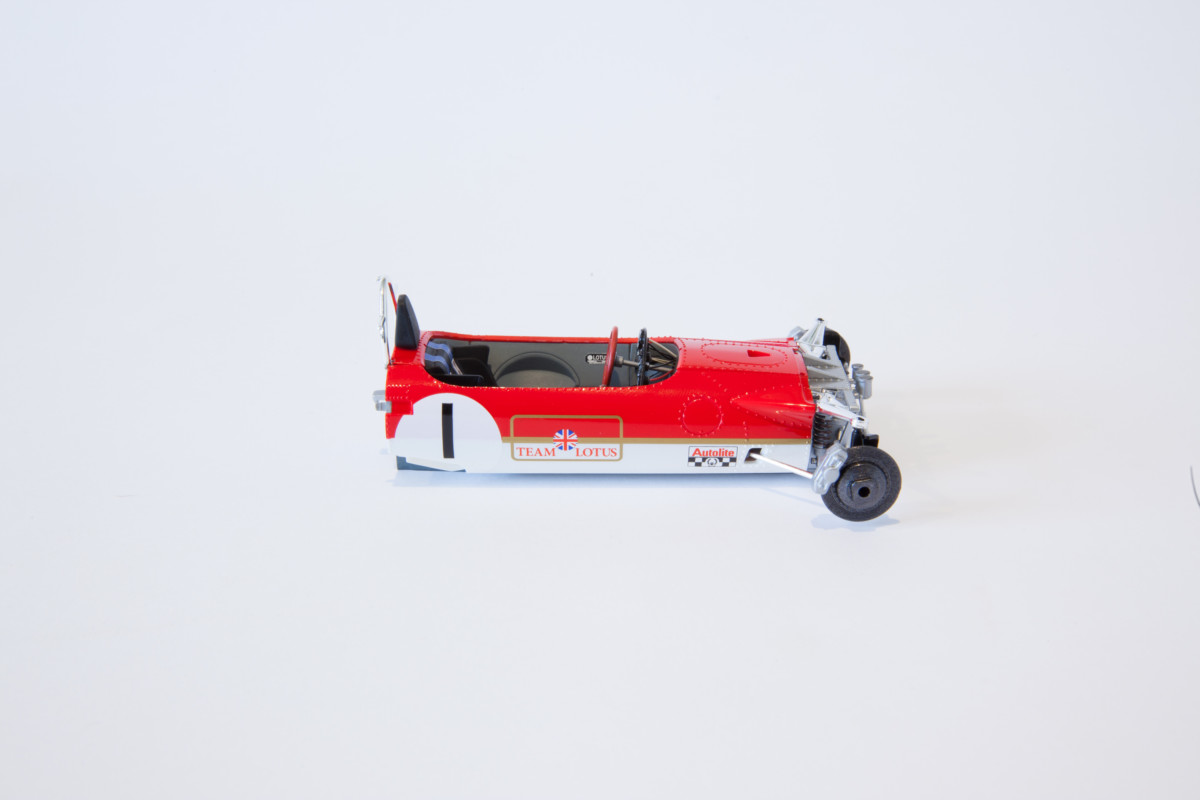
Predominantly finished all in silver except for the suspension struts and brakes, there are a lot of pieces that make up the final assembly so take your time, and ensure fitment is perfect before cementing things in place. If everything fits as it should, this will allow the nosecone to seamlessly fit over the assembly to make the finished bodywork line up perfectly.
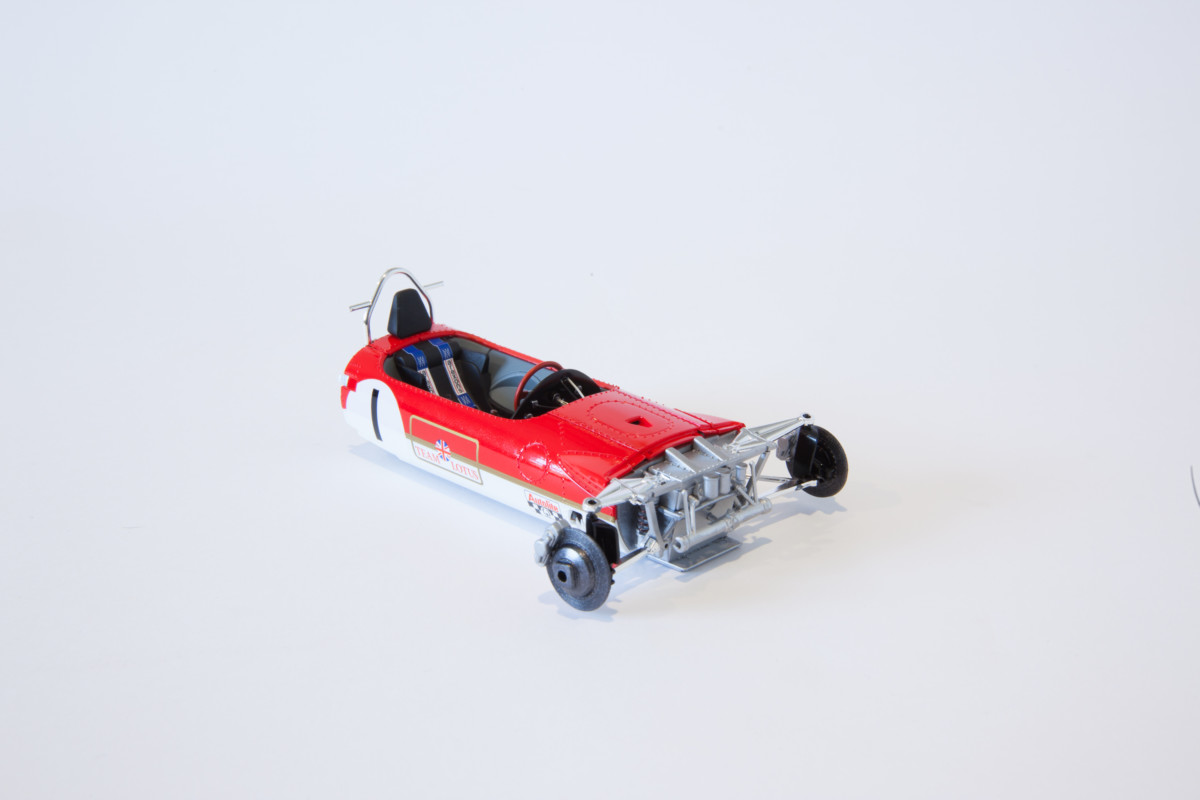
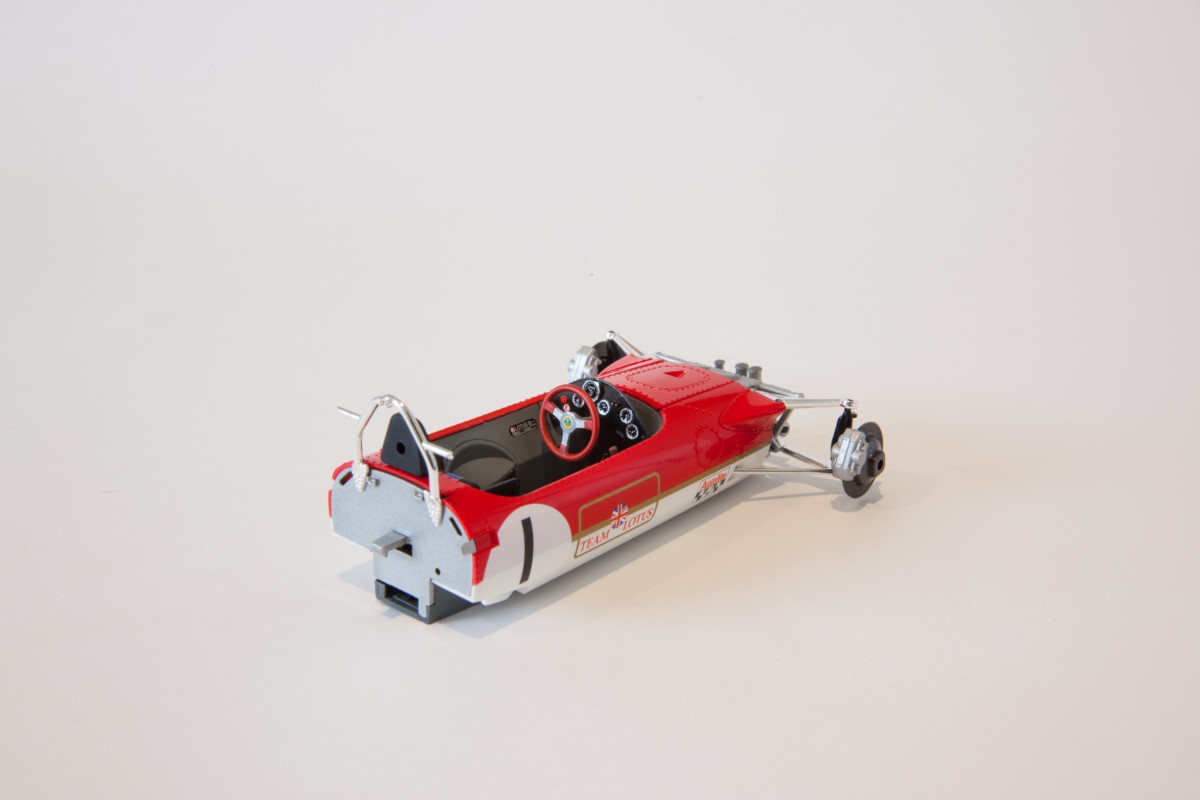
In addition to the front suspension and braking setup, the Lotus 49s’ cooling is all stuffed inside the front nose area as well. Ebbro replicates this courtesy of two side stays mounted to the front suspension allowing the radiator to be mounted well forward of the drivers feet.
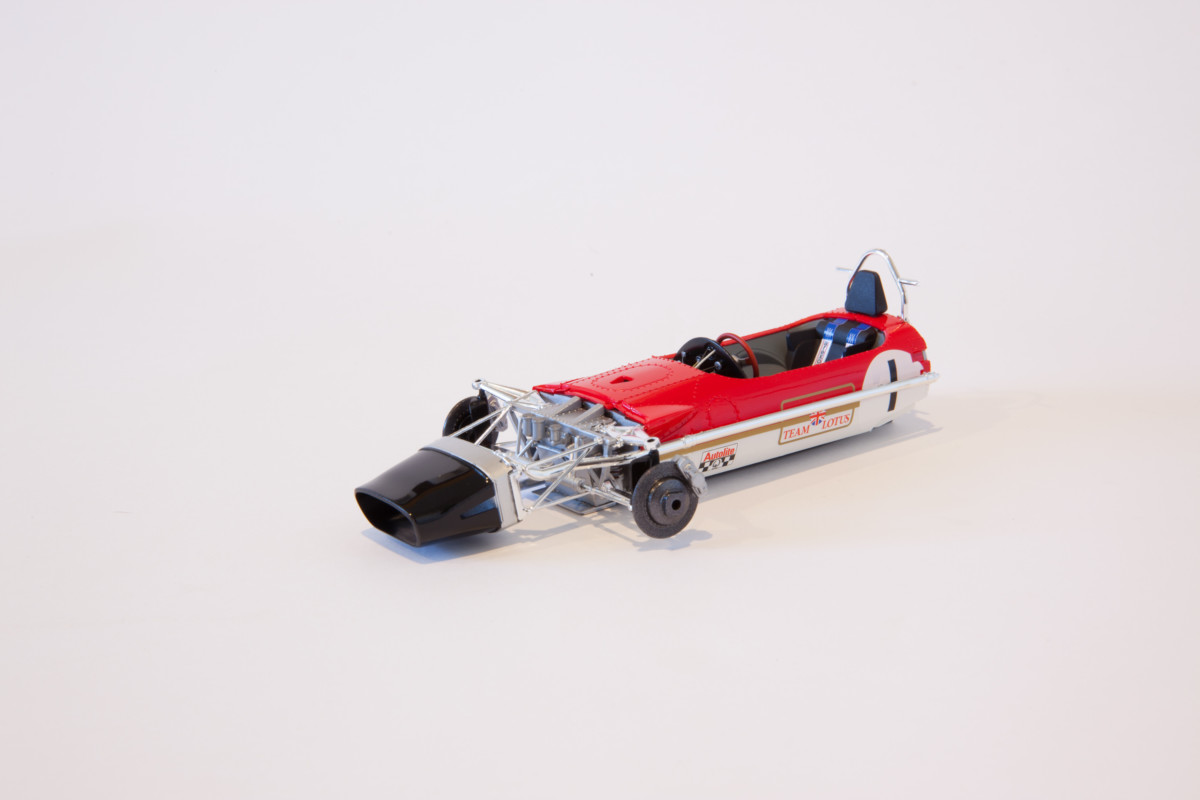
The decals are beautifully created, and have no edging allowing for a very clean finish. The white roundel that holds the racing number is a little thin and there was some color bleed from the red base, although this is the only fault I could find with the decals. Super crisp lettering, and very structurally sound decals meant that they didn’t stretch or tear when being manoeuvred into their final place on the kitset.
Engine, gearbox, and rear suspension
The Lotus 49 was famous for its design as the engine was the cars bearing structural member, bolted to the monocoque, suspension, and the gearbox. As the Ford DFV (double four-valve) was effectively ground zero it makes sense to have a high level of detail here. Ebbro once again has delivered!
The engine bulk is made up of large pieces that build the entire block with two header plates.

The craftsmanship that has gone into recreating the most famous F1 engine of all time is amazing. With no sanding, filling, or modification required the base for the beating heart of the car was a pleasure to fit together.
My only issues throughout the entire engine assembly came at the end with the spaghetti exhausts. While greatly engineered, the 4 individual pieces that make up the four-into-one exhaust system were a nightmare to line up nicely through the rear suspension. Perseverance and patience are your best friend, and a good result can certainly be achieved.
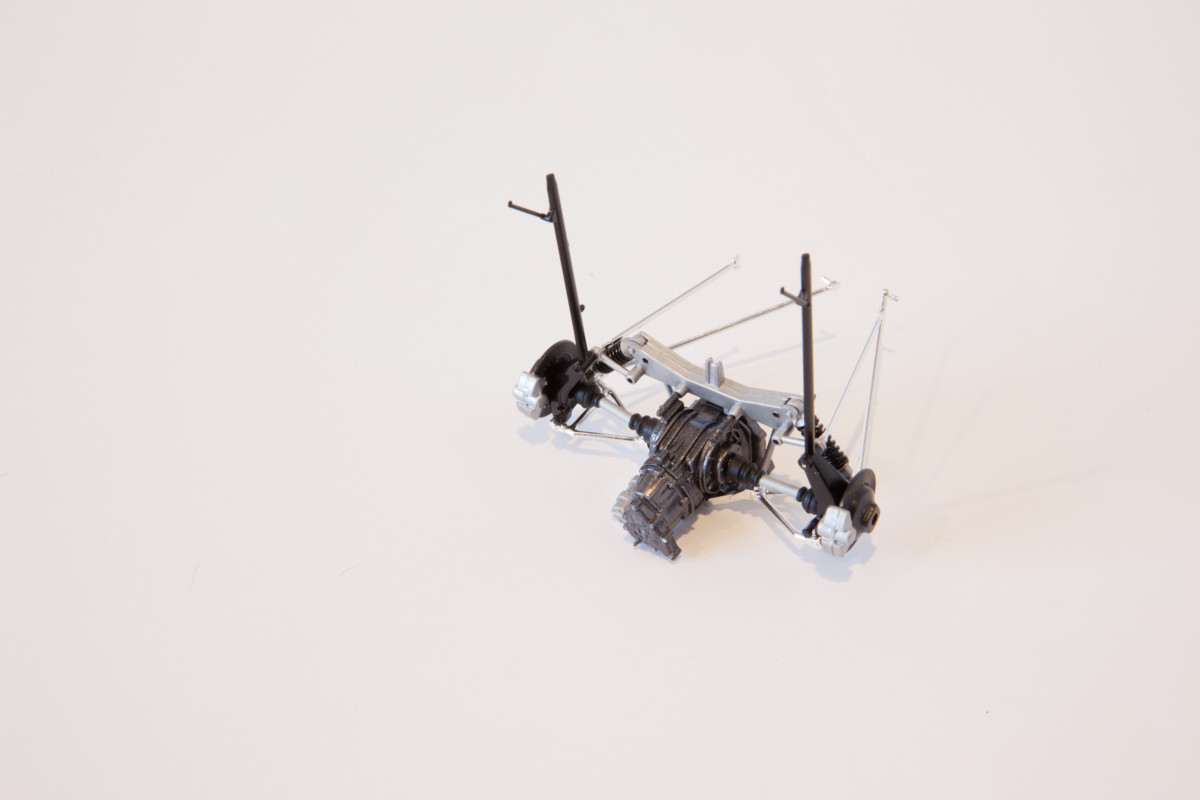
The rear suspension is a much easier task to complete and bolts directly onto the rear of the engine. The large upright wing support stays are attached directly to the rear suspension uprights and the gearbox is the hub of construction. A mix of matte black, chrome, and gunmetal grey make for a finely detailed rear end.
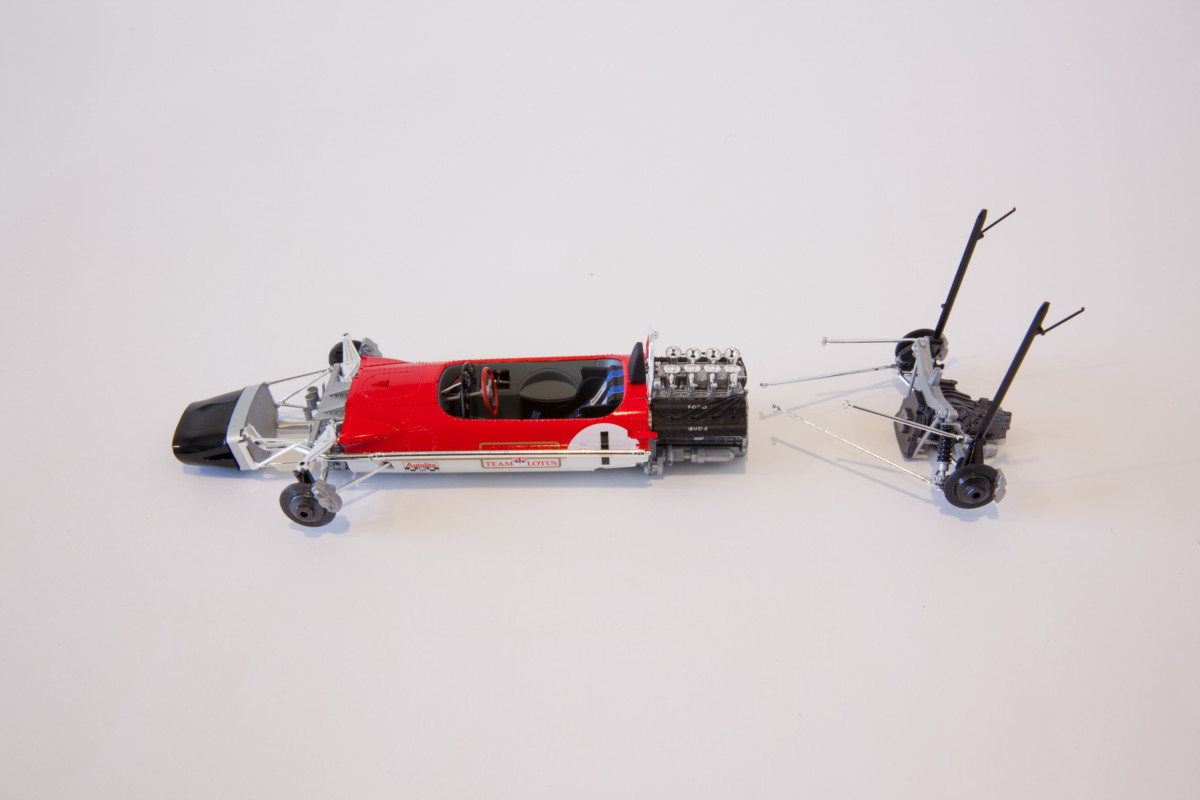
The rear end is attached to the monocoque via four stays that connect into the top and bottom of the bodywork, while wrapping around the engine. Small pins are inserted into the bodywork to fasten the rear end to the model, while the engine is screwed into the bottom of the chassis via a small metal screw.
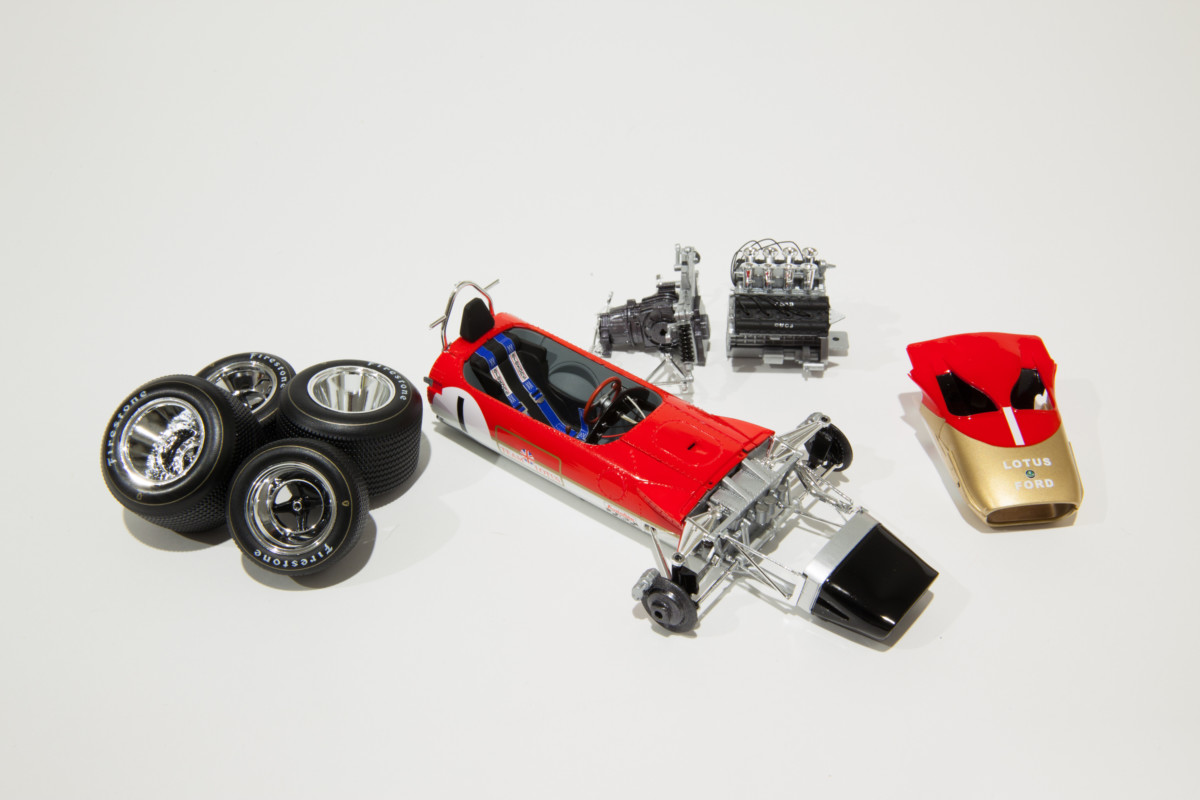
Final assembly
Once the rear end is attached to the engine, while the cement is curing ensure the gearbox assembly is sitting straight and true otherwise the rear wheels will be on an angle looking from above once attached in the final steps.
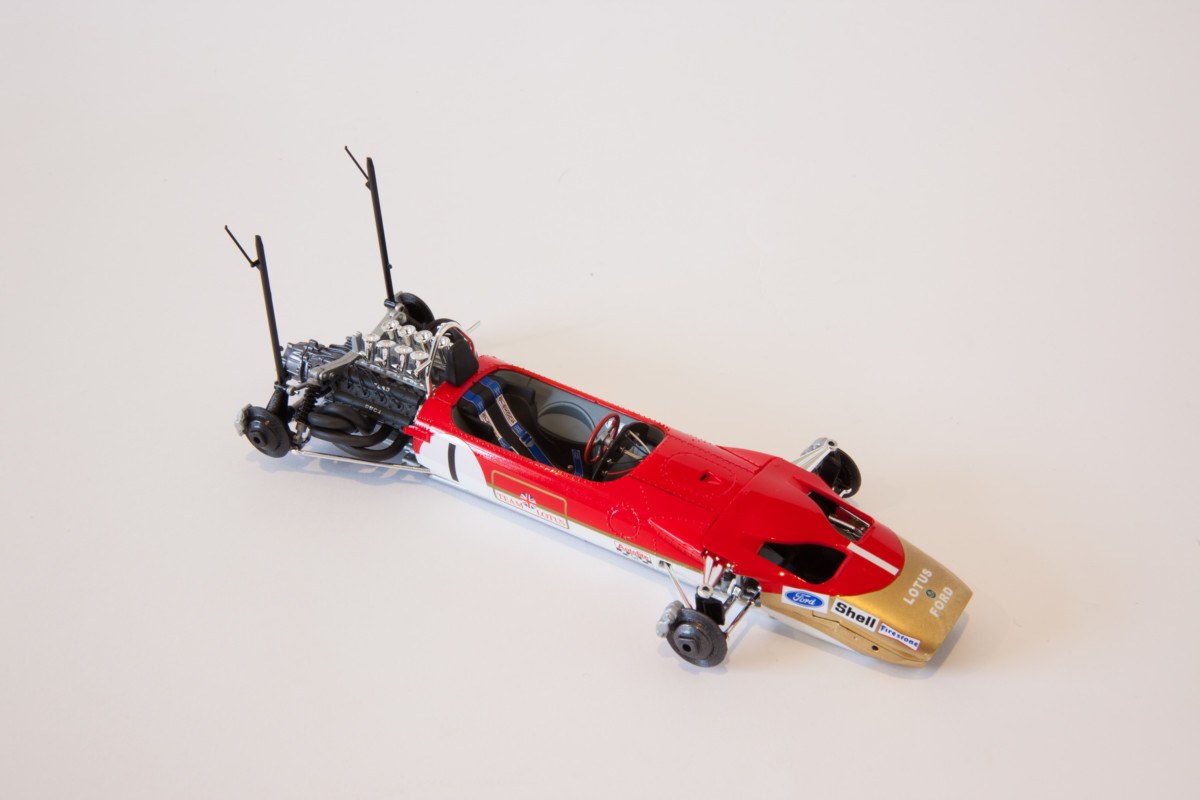
This image illustrates how important care and test fitting is during the early stages of assembly. The bodywork all meets at the major join between the nosecone and refuelling plate just forward of the steering wheel assembly.
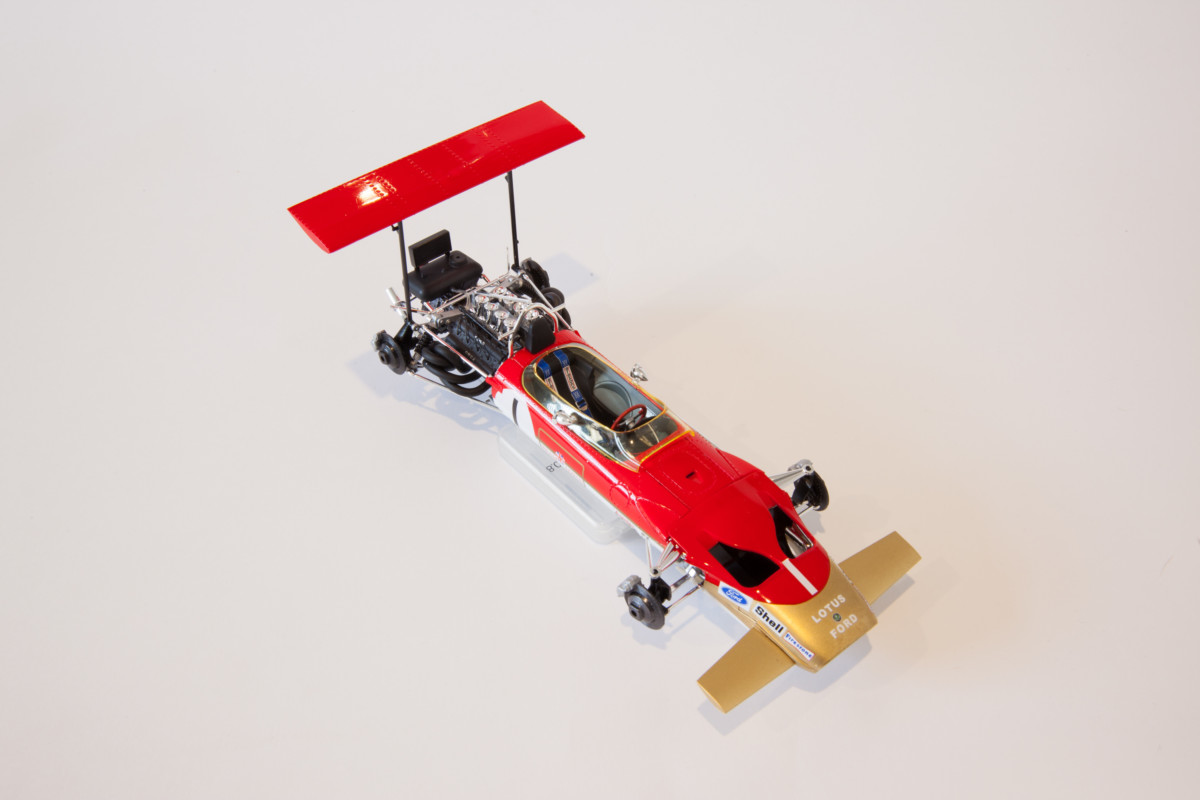
The real finishing touches to this model are the beautiful front wings, and the massive aerofoil attached to the rear suspension mounted high up. The Lotus 49B was the first F1 car to be fitted with front and rear aero. This was downforce in its most crude form and caused a number of accidents for the drivers of the 49B.
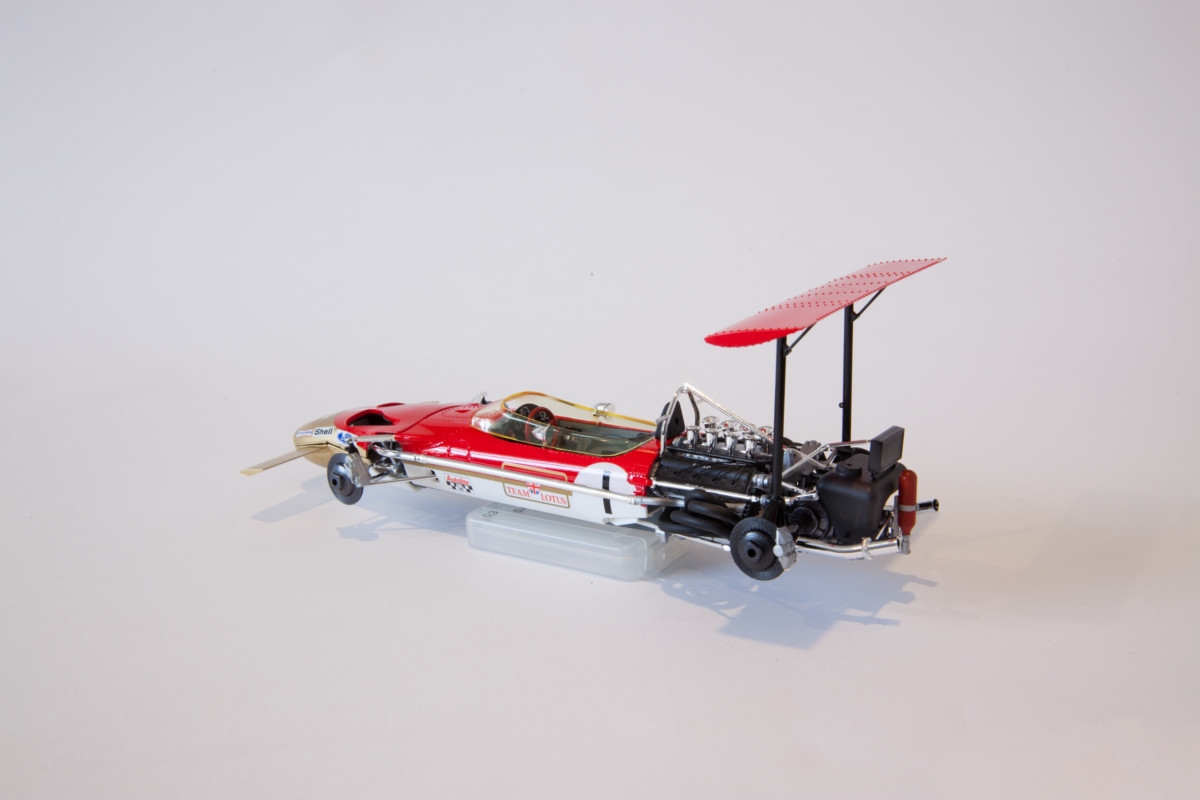
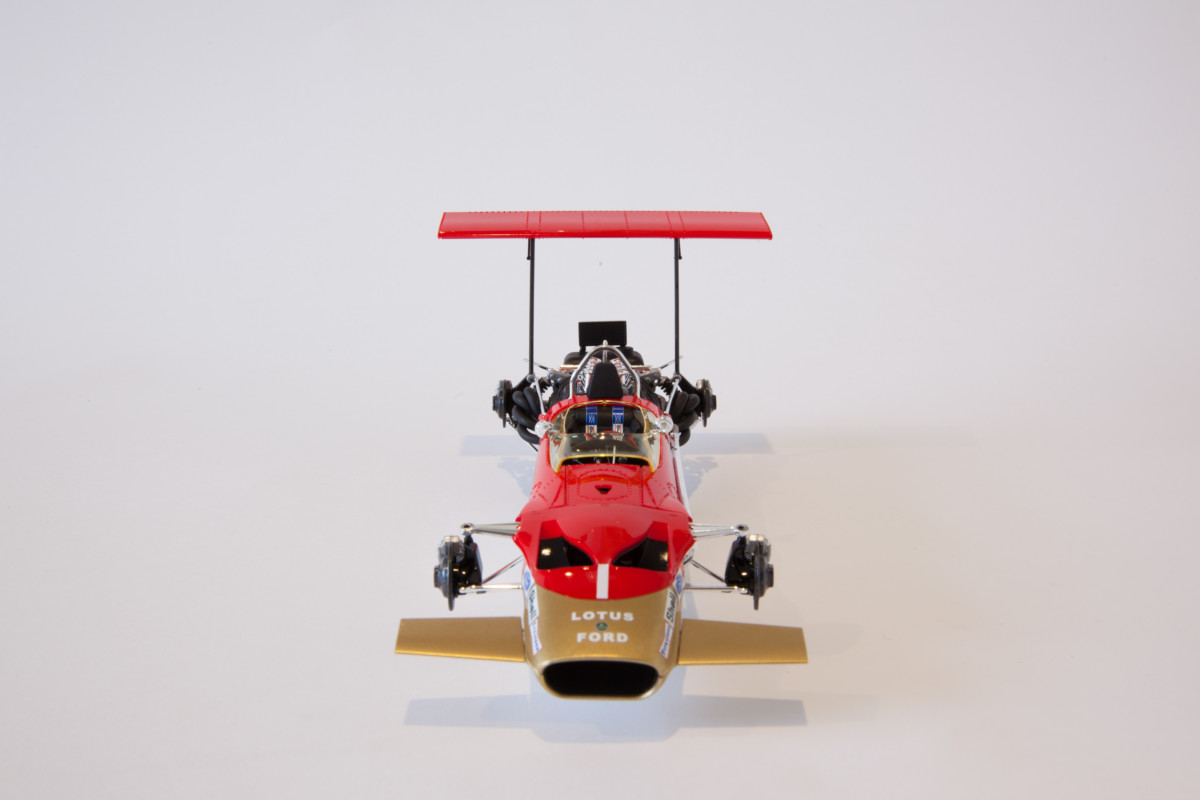
The finished product
The 49B is a masterpiece of F1 design, and Ebbro has outdone themselves in creating such a clean, detailed, and elegant kitset. Some say that this is the most beautiful Formula One car ever built and it is easy to see why they think so.
A combination of bold striking colours, huge wings, and big tires is a winning combination for any race car.

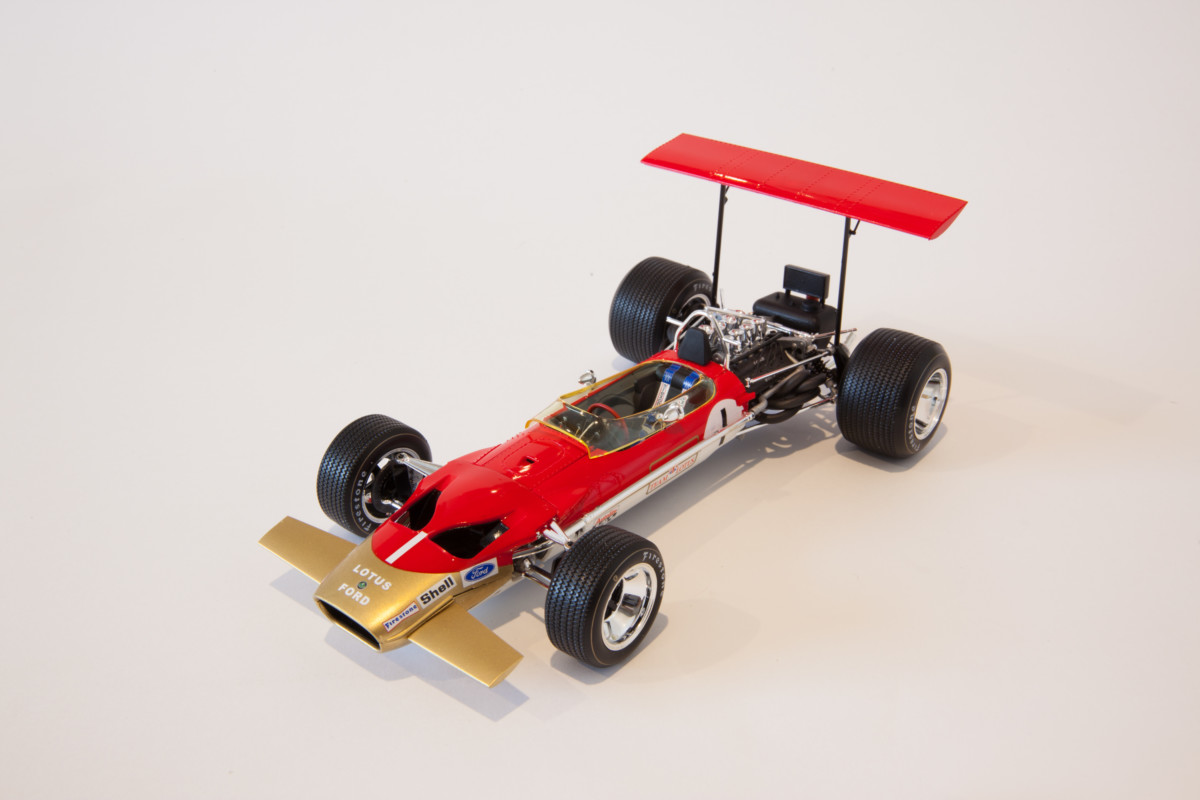
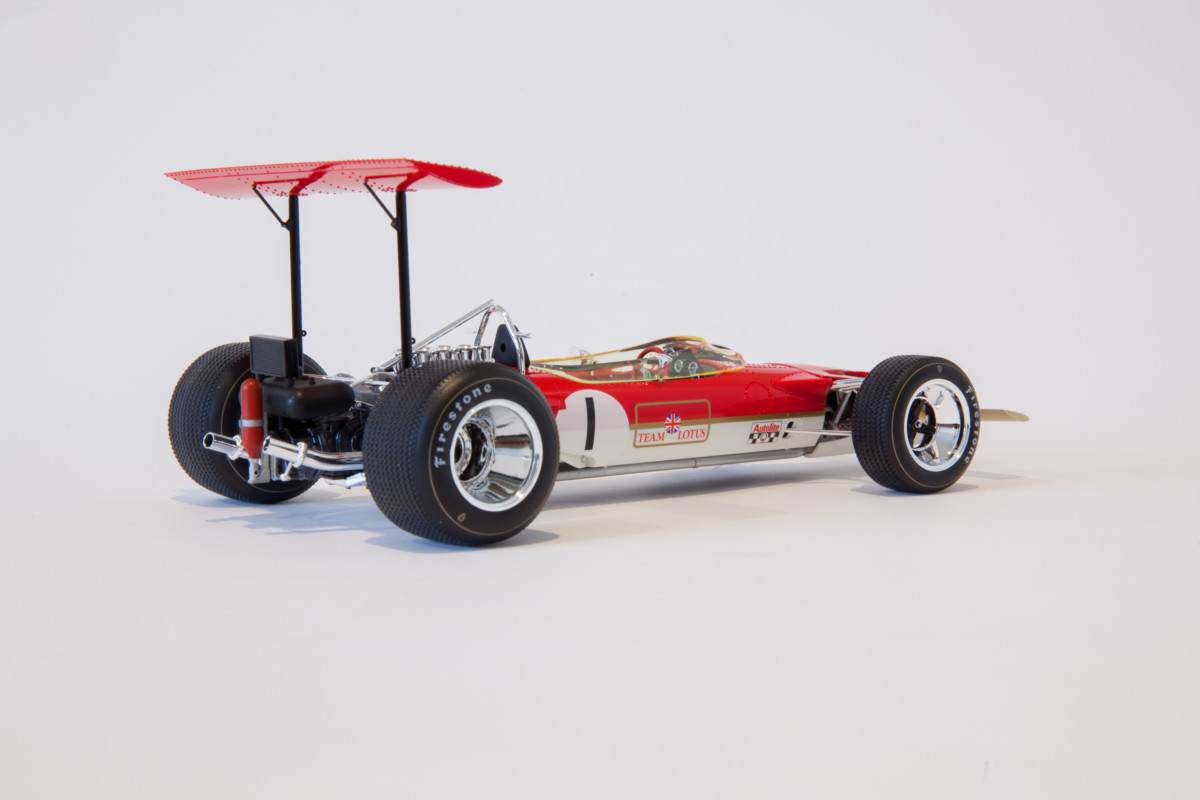
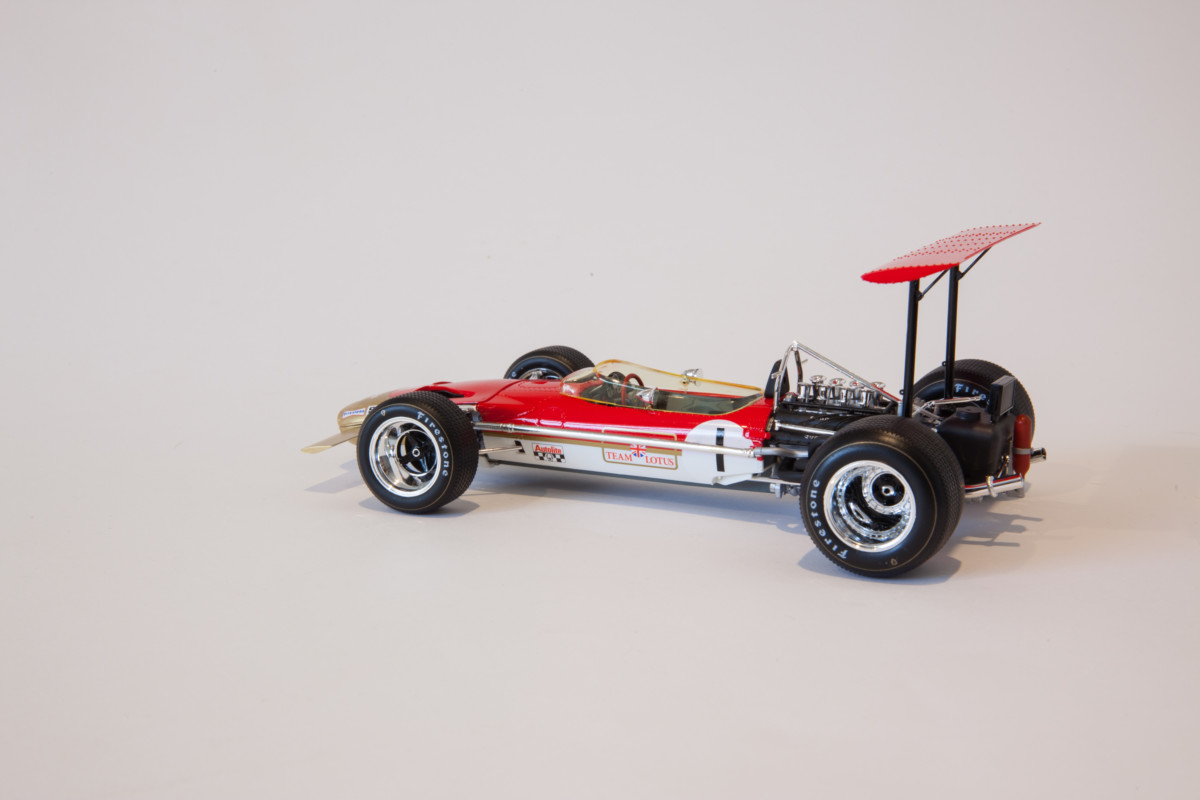
The model represents one of the deadliest eras that the sport of Formula One has ever seen, yet siting on the shelf, this 1/20 scale creation looks as pretty as a Brands Hatch sunset.
For anyone who has built a 1/20 Ebbro classic F1 kitset, the beautiful fitment, outstanding attention to detail, and value for money can’t be beaten. I rate this kit a solid 9 out of 10 as once sitting on the shelf finished, it truly is a stunning car and is easily on par with the engineering quality of the best kits out there.
If this kit has caught your attention, you can pick one up for yourself here!


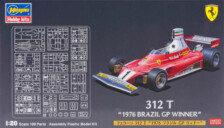
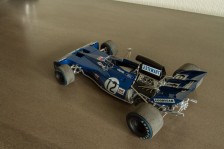

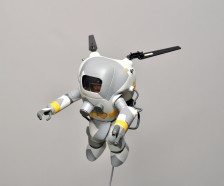

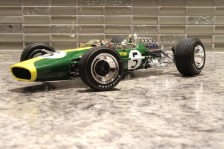
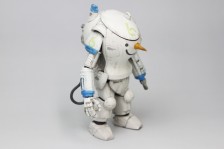
sam tate
Good Day, Mark. You’ve done a masterful job with this kit, beautiful! I am building it now and am having an issue with the fit of the rear wheel assembly and those huge rear tires. I am left with about an 1/8 inch of rim exposed on the backside of the tire. What could I have done wrong?
samdiego
Another Good Day, Mark. I figured it out, pesky part numbers.